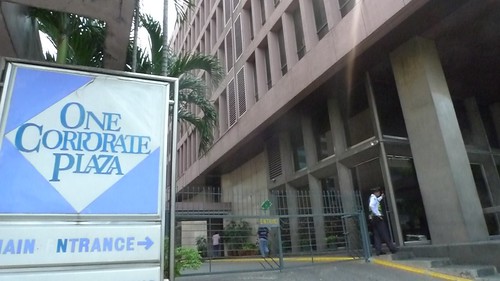Penman for Monday, May 30, 2011
IT MAY be silly and presumptuous to introduce a book that hasn’t even been accepted yet for publication, but humor me as I compose this piece—here in my Umbrian hermitage about which I’ll write some other time—trying to justify why I just emailed a collection of my poems to a friend who just might be foolish enough to publish them.
This friend, a publisher, had asked me some time ago if I had any unpublished manuscripts left that she could consider for her press, and I had quickly said no, certain that I had exhausted even my juvenilia (I finally yielded my first Palanca-winning story from 1975, a fanciful piece titled "Agcalan Point" which I was never happy with, to Ateneo’s Kritika Kultura last year). And then I suddenly remembered that I had a rarely-visited folder somewhere in my computer, and finding both challenge and opportunity in my friend’s inquiry, I boldly went where I had never gone before and said, “Well, how about my poems?”
If my friend looked surprised by my response, she should have been; I, too, felt instantly embarrassed by my audacity. At 57, I’ve written and published over 20 books and edited as many others, but never a book of my poems. Very few people know that they exist, and I myself practically forgot about them; I’m not even sure they’d qualify as publishable poems, by today’s standards, which seem to eschew rhyme, fun, and things too comfortably familiar. Many of my poems were and are jokes, happy to be met with a few chuckles; I find—the philistine—that I can't much appreciate poems that I can’t read aloud or memorize, or that I need a thesaurus or Google for.
In his introduction to my first book, Oldtimer and Other Stories, in 1984, Franz Arcellana mentioned that he expected me, at some point, to publish a book of poems. I remember being mystified by that remark, because I simply couldn’t imagine it happening. I had written stories, plays, and screenplays, and even some doggerel for Jimmy Abad’s poetry class, which I attended as an undergraduate returning from almost a decade of dropping out. But seriously good poetry was for me then—as it still is, today—something that better writers wrote.
But indeed it was poetry, not fiction, that brought me back to school. Not my poetry, which was non-existent, but that of Robert Graves, that prolific, white-maned Englishman who lived to be 100, had a tempestuous love life, and who reportedly rendered speechless our own young Nick Joaquin, who went to visit him in Majorca. (You can find the Gravesian influence all over “Summer Solstice” and “May Day Eve,” but that’s another story.) I came to know about Graves and his unabashedly male—but not macho—poetry through Cesar Ruiz Aquino, on the boat that took us to Dumaguete in 1981, where he was a panelist and I was a fellow at the workshop.
By the end of that summer I was so intoxicated by the stuff that I gave up my job and went back to school for an English degree, supported only by Beng’s charity. If I had any doubts about whether I had done the right thing, they quickly vanished when I heard a video, at the old British Council, of the poems of Dylan Thomas being read by Thomas himself. I say “heard”, because you didn’t see the poet, just visual interpretations of such stirring pieces as “Fern Hill” and “Poem in October.” That last poem begins with “It was my thirtieth year to heaven…” and I was 27 at the time, but I felt like the poem had been written for me. When I went to class, it was to savor the sonneteers—Wyatt, Sidney, and of course Shakespeare himself. I soon discovered more poets whose voices resonated in me: Rilke, Lorca, Dickey, Larkin, Neruda, Cavafy. In my own work, I was happily married to fiction—but poetry was that dark-eyed witch who could quicken my blood within seconds of glimpsing her in the window.
I began writing more of what literally passed for poetry for a graduate class in Wisconsin under a professor named Robert Siegel—a very fine poet, going by the comments on his own work ("To meet the unpretentious versatility of Robert Siegel after the single-mindedness of other poets is like returning to the mainland after a tour of the islands," said the Times Literary Supplement). One day, he called me to his office and said, “This Septych poem—do you know that it has 49 lines?” I honestly did not, and was surprised that he had bothered to count them. I came out thinking that my intuition was probably working harder than I imagined, and that maybe I was on to something. After that semester, I had about a dozen poems, most of them about Pinoy life in the USA, and having nothing more to do with them, I sent them off to the Palancas in Manila, and promptly forgot about them.
Of all the literary prizes I’ve won, the one I’m proudest of is the second-prize Palanca (or, technically, one-third of it) that I received for that small collection titled “Pinoy Septych and Others Poems” which I submitted, anonymously of course, in 1990. It didn’t matter to me that I had to share that prize, modest as it was, with two other winners—Fidelito Cortes and Jaime An Lim. This was back when the Palancas allowed prize-splitting—trading, I suppose, a little cash for a lot more glory. If anything, I was ecstatic to have been able to slip into that realm, the naked swimmer in a pool of Philippine poetry’s great white sharks (Ricky de Ungria shared the first prize with himself, for “Body English and “Decimal Places”; the third prize was shared by Luisa Igloria, Neil Garcia, and Lina Sagaral Reyes.)
I’ve never joined a poetry competition since, because I just haven’t written that much more, and still don’t and can’t think of myself as a poet, 1990’s fluke victory notwithstanding. Indeed I cringe when I hear the word “poet” tossed around at universities and workshops the way a bored and sleepy dealer hands out the cards at a poker table, and the way a losing player desperate for a pair of aces grabs them. I suspect that poets should wait to be called that by others; until then we just write poems, or try to. Poetry remains for me the hardest thing to write well and the easiest thing to do badly.
Whatever happens, this slim book, if it gets published, will very likely be my first and last fling with poetry. That should make it something of a novelty or even a collector’s item, but I have a sneaking suspicion that I’m going to be doing most of the collecting.


